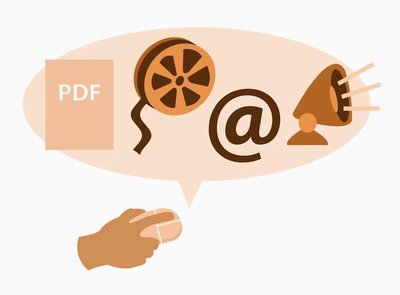November 1, 2007
Educational Outreach plans easy-to-use tools for online instructors
If you can manage to complete an airline reservation online, you should be able to use the tools Educational Outreach plans to provide to instructors of online courses.
That’s the goal of the unit’s online learning office. But the challenge of reaching that goal is complicated by the different modalities that are used to deliver distance education. One instructor might use video in a class. Another might use PowerPoint. Yet another might emphasize discussion boards. And some might use those three, plus a bunch of other tools. The goal is to have the student access all these features without viewing the “man behind the curtain” technologies involved in delivering the content.
UW Educational Outreach (UWEO) has a long history of developing online courses through its Distance Learning Design (DLD) group. In addition, UWEO recently assumed management of the EDGE Program in engineering, which provides access to education for working engineering professionals. Michael Campion, who is now bringing together DLD and EDGE as director of online learning, sees the job of his unit as facilitating the social connections that are essential to good education. “Learning occurs when people have the opportunity to engage one another,” he says, whether that’s student-to-student or student-to-faculty member.
When a course is being offered for the first time or when a major revision is under way, one of the unit’s instructional design staff works with the instructor to match the course design to the audience. Those taking undergraduate courses for credit are mostly matriculated UW students, with a mixture of working professionals and students at other universities. Students in master’s degree and certificate programs are generally older, having been out of school between five and 20 years and well into their careers. There are expectations that come with courses in different disciplines: Instructors and designers assume that the average student in a computer science course is likely to be technically more adept than, say, someone in the social sciences.
Then there is the nature of the course itself. Some courses are what Campion calls “group start,” with a fixed start date, scheduled assignments and benchmarks, with online use for course materials and individual posts or real-time exchanges. In contrast, “individual start” classes are open all year round and usually take about three months to complete. Discussion boards often play a role in the course and provide opportunities for asynchronous interaction.
The latest growth area appears to be in “hybrid” courses, which meet face to face occasionally — but less often than regular classes — and have expanded online activities. The designer and instructor must plan carefully to take account of what activities need to occur in the precious face-to-face time, and what is better handled online.
Online classes deliver to students a mix of text, graphics and Web pages. These can include videos, animations, simulations and sophisticated PowerPoint presentations that incorporate audio and the interactive ability to check student progress as the presentation unfolds, by requiring students to respond to questions as they are going through the material. Many classes — especially the graduate engineering classes traditionally offered through EDGE — will continue to be offered primarily through streaming video, either through a live connection to a classroom in Loew Hall or accessed after the end of class at the student’s convenience.
“In designing the classes, we let the material determine the mode that we use,” Campion says. “There’s a vigorous dialogue between the designer and the instructor over the nature of the material that is being taught, whether students are required to engage in some specific activity, and how students can achieve the educational goals outside of the usual classroom setting.”
In the first days of online course design, instructional designers would painstakingly provide the obscure but necessary coding for each presentation individually. This evolved into a “homegrown” set of tools that can interact with other systems, such as Catalyst and online registration. Campion says the office is now testing a variety of tools available through commercial vendors or as “open source” products.
The goal of this next phase of development is to put instructors in the driver’s seat in handling most of the content details of their courses, and to make the different features — whether they be video, PowerPoint, graphics or animation — work together in a way that is as seamless as possible. “Most instructors,” he says, “want a self-contained space that is easy to navigate for uploading material and gathering feedback from students. The best tools also provide instructors with information for tracking what the students are doing, what problems they are facing in the course, and who is ‘showing up’ online.” In the future, Campion believes, the work of the instructional design team will be to customize general purpose applications, modifying them to better serve the needs of faculty and students.
All told, Educational Outreach offers more than 300 courses which serve more than 20,000 people. Although currently most of these students are in the Seattle area, hybrid courses may well release pent-up demand for selected higher education offerings in a broader region. Of course, pure online courses can attract students from around the world.



